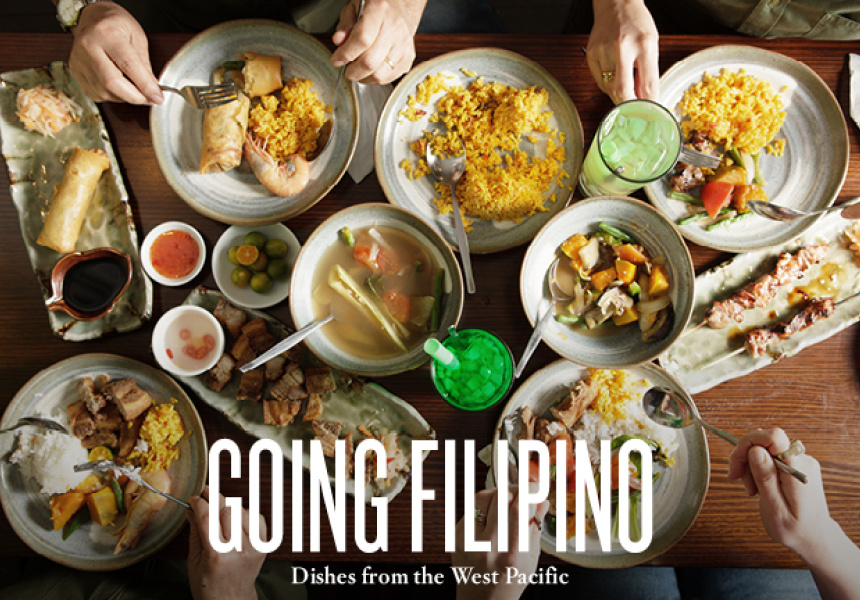It’s quite possible that you haven’t heard much about Filipino food before, let alone tasted it, partly due to the small number of restaurants available. Considering the people of the Philippines are the third largest Asian immigrant group in Australia behind Vietnamese and Chinese, Filipino food is hugely under-represented in our restaurant scene. Filipinos are known for their hospitality and generosity, especially when it comes to food - leaving a Filipino home with an empty stomach is almost unheard of. If your friend’s mum happens to be there, you’d better adjust that belt buckle because you’re in for a feast.
The 1970s saw the arrival of the first major wave of skilled Filipino migrants in Australia. Butchers were mystified by the demand for unpopular off-cuts at the time such as oxtails and pig’s trotters, to be used in the dishes that Filipino expats loved to cook with. The cuts were sold cheaply, with some butchers practically giving them away.
More recently, the underrated cuisine has seen a rise in prominence. Two critically acclaimed New York based restaurants, Jeepney and Pig & Khao, have both made a name for themselves through their modern take on traditional recipes. Back on home soil, South Melbourne restaurant Dahon Gourmet Tea Lounge has responded to the local demand for home-style cooking with a fresher approach to native dishes. During the week, their signature BBQ pork baguettes are snapped up by workers and have been a welcome addition to Melbourne’s wave of gourmet baguettes. On weekends, Dahon turns into a mini Filipino fiesta as families and pork crackling enthusiasts gather over plates of lechon kawali (deep fried pork belly). When it comes to desserts at Dahon, leche flan is king. In the Philippines, everyone from Lola (grandma) to the next-door neighbour has their own way of making this much celebrated dessert, which could be likened to a delicate, silky crème caramel.
Stay in the know with our free newsletter. The latest restaurants, must-see exhibitions, style trends, travel spots and more – curated by those who know.
SIGN UPThough unique in its own right, Filipino food has also been defined by a melting pot of influences, springing from the Spaniards who colonised the Philippines for nearly four centuries to the Chinese settlers. The cuisine embraces all the common elements of Asian cuisine; sweet, salty, spicy and sour. Ingredients commonly used include garlic, vinegar and soy sauce, all of which are used in chicken adobo - easily one of the most recognisable Filipino dishes.
Filipino food is a comforting soul food. You feel it when you chow down on lechon - suckling pig spit roasted for hours over charcoal beds, resulting in a crispy, glazed crackling with juicy meat underneath. If you want to go all out for your next party, give Amalia’s Lechon Cebu a call - the Tottenham-based spit roast specialist epitomises the fine art of rotisserie swine cooking. Usually spotted and quickly snatched from the grill at a barbeque is tocino; thinly sliced pork shoulder that’s been cured for three days, before being grilled until tender and charred. Pop by Filipino grocer Manila in Footscray and ask the friendly staff for the ingredients needed to make this simple recipe.
A daily tradition that Filipinos look forward to the most is ‘merienda’ which means a light snack taken in-between meals. Merienda isn’t a typical Australian snack time where one would quickly scarf something down whilst watching TV, but is seen as a chance for family and friends to get together and appreciate each other’s company. It’s the Filipino version of afternoon tea, minus the ribbon sandwiches.
A childhood favourite among merienda enthusiasts is pandesal; soft, slightly sweet, small bread rolls, best served warm with butter and a slice of cheddar cheese. For Filipinos in Melbourne, a daily commute to Braybrook’s Masarap Bakery is a common ritual, to bring back hot pandesal by the dozen. You will also find other popular merienda at Masarap Bakery, including the soft, bright yellow, sweet brioche called ensaymada.
Filipino food is all about discovery - just like the Philippines itself, with more than 7000 islands split into 17 regions and 80 provinces. With so many other dishes and flavours yet to take the limelight, go out and discover it for yourself.
Where to get it:
Dahon Gourmet Tea Lounge
Shop 5, 111 Cecil Street South Melbourne (opposite South Melbourne Market)
(03) 9696 5704
Masarap Bakery
178 Churchill Avenue Braybrook
(03) 9311 1096
Amalia's Lechon Cebu
12-20 James Court, Tottenham
(03) 9314 0858
Manila in Footscray
118 Hopkins Street, Footscray (opposite Footscray Market)
(03) 9362 0431
Adrian Briones is the author of the cookbook What the heck is Filipino Food? and publisher of the blog Food Rehab.
*Broadsheet is encouraging its readers to keep informed with the news of Typhoon Haiyan. Here is where you can contribute to the relief efforts:

